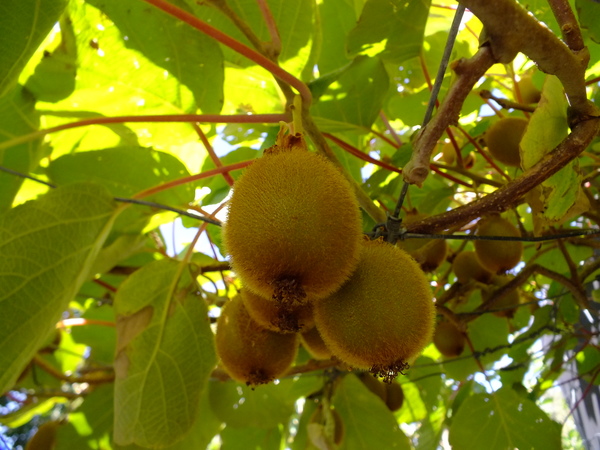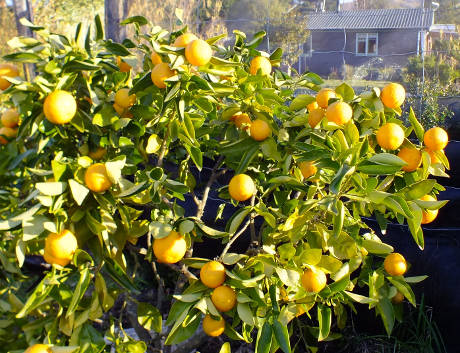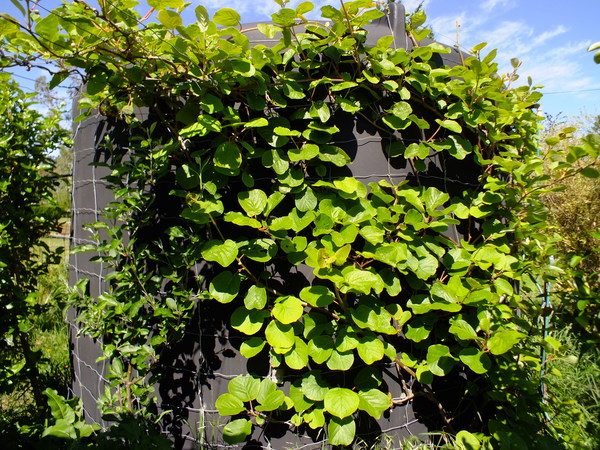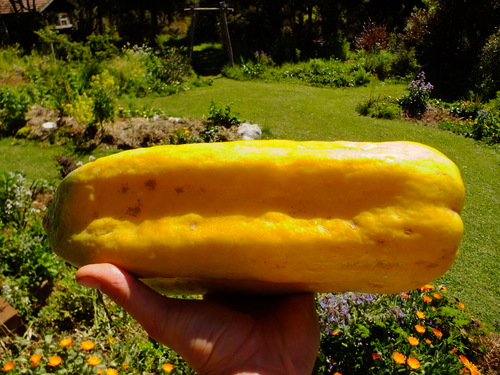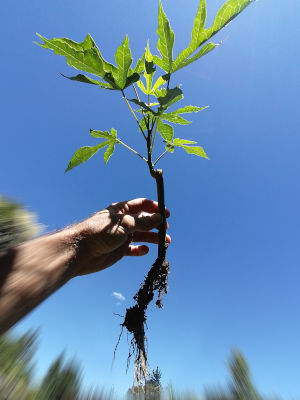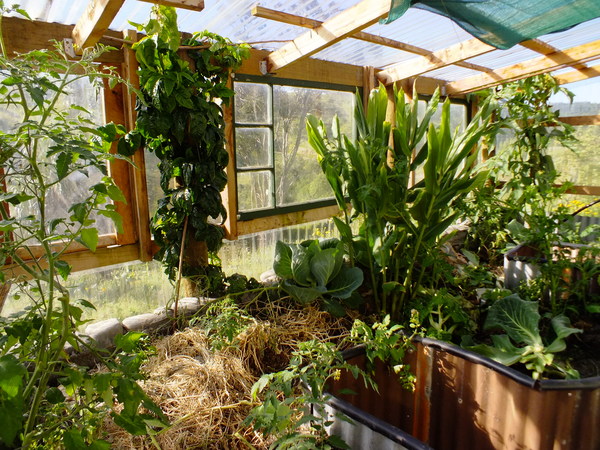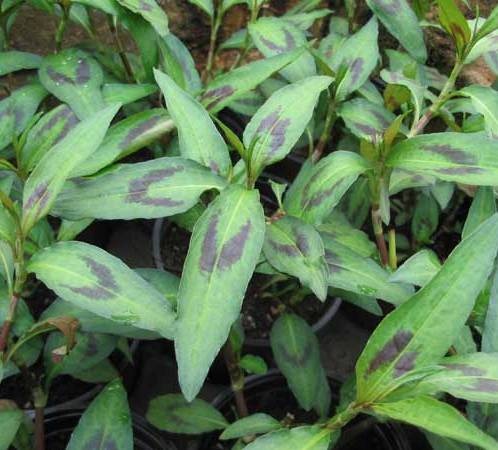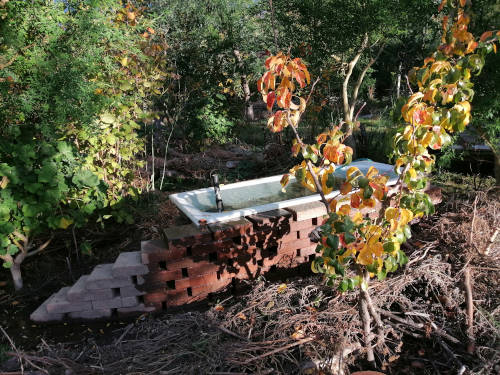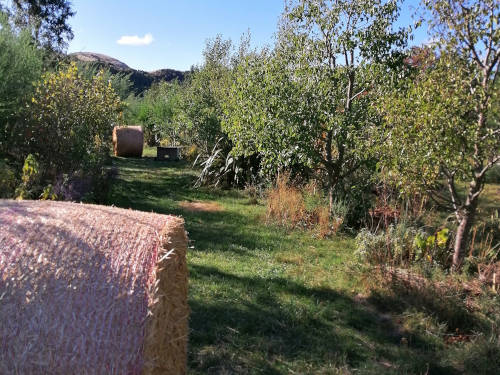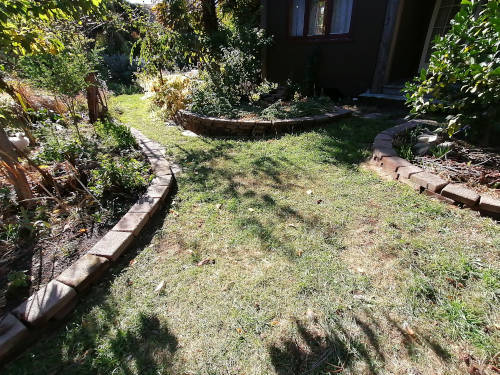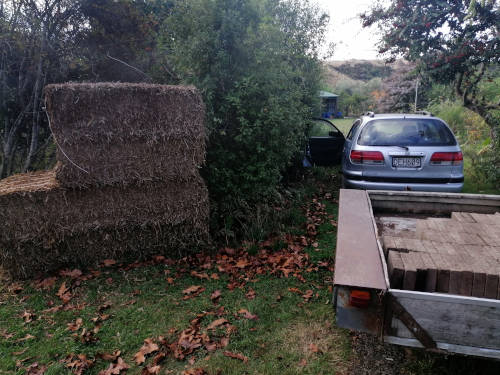Growing cold sensitive plants by developing and exploiting micro-climates
First off, what is a micro-climate? Basically it is a site where the climatic conditions are more favourable due to improved solar energy capture and storage, cold air drainage, protection from strong winds etc. These sites allow for the cultivation of plants that would otherwise struggle to be productive or even survive.
In my location, through carefully matching plants with available sites I (so far) have been able to grow exotics such as citrus, kiwifruit, avocado, ginger, passionfruit and other sub or semi tropical plants.
Somewhat counter-intuitively, sites that get early morning sun and thus warm up early and quickly are not ideal. Frozen plant tissue that thaws to rapidlyis more likely to be damaged.
Existing sites
There are several approaches to micro-climate exploitation. The first but sometimes overlooked option is to identify existing sites that offer the kinds of benefits you are seeking. Some of the more obvious include:
- North and north-west faces of buildings, embankments or other structures that provide shelter and thermal mass
- Under the canopy of evergreen trees
- On upper slopes that provide cold air drainage
- Near sufficiently large bodies of water
- Near or on top of decomposing organic matter
One of the best way to identify micro-climates is to observe various locations on frosty mornings and during the late afternoon. You should be looking for spots that receive plenty of sun at the end of the day to heat (charge) them up and which do not have heavy frost on them at dawn. This means getting up and exploring your land in the cold, sorry.
Creating new sites
Micro-climates can also be created. Here the most obvious, popular yet costly approach is to construct a glass or plastic covered framework within which to grow your desired plants. While these glass houses and tunnel houses offer excellent climate they can be expensive to construct and susceptible to high winds.
Another technique, as identified above, is to grow new micro-climates through careful selection and placement of evergreen trees. While this approach takes longer than constructing a glass house, it costs considerably less and is extremely resilient in the face of strong winds or heavy snow. I have utilised this technique is a number of sites using single or several tagasaste trees. This species is a small evergreen nitrogen fixing tree that is extremely fast growing and doubles as a source of mulch material, with frequent pruning of the outer branches.
There is an additional benefit from from using trees as a 'blanket' to protect cold sensitive plants. As cold wind passes the shelter tree the physical resistance causes friction, slowing the air and preventing mixing. This allows warm pockets to form.
As cold air is denser it sinks and slides off the land to accumulate in valley bottoms and in hollows to for 'frost pockets'. Small gains can be achieved by building mounds and planting on top, above the frost. Further improvements can be gained by combining significant quantities of organic matter into the mounds so that heat is given off during the decomposition process.
The addition of thermal mass to absorb solar energy energy and slowly release it when the surrounding air temperature falls is another easy approach and can often have other benefits. One of my favourite examples is growing kiwifruit vines on a large black plastic water tank. 25,000 litres of water weighs 25 tonnes and, in our climate, that would never freeze. Other options include piles of boulders, brick buildings, concrete walls etc.
